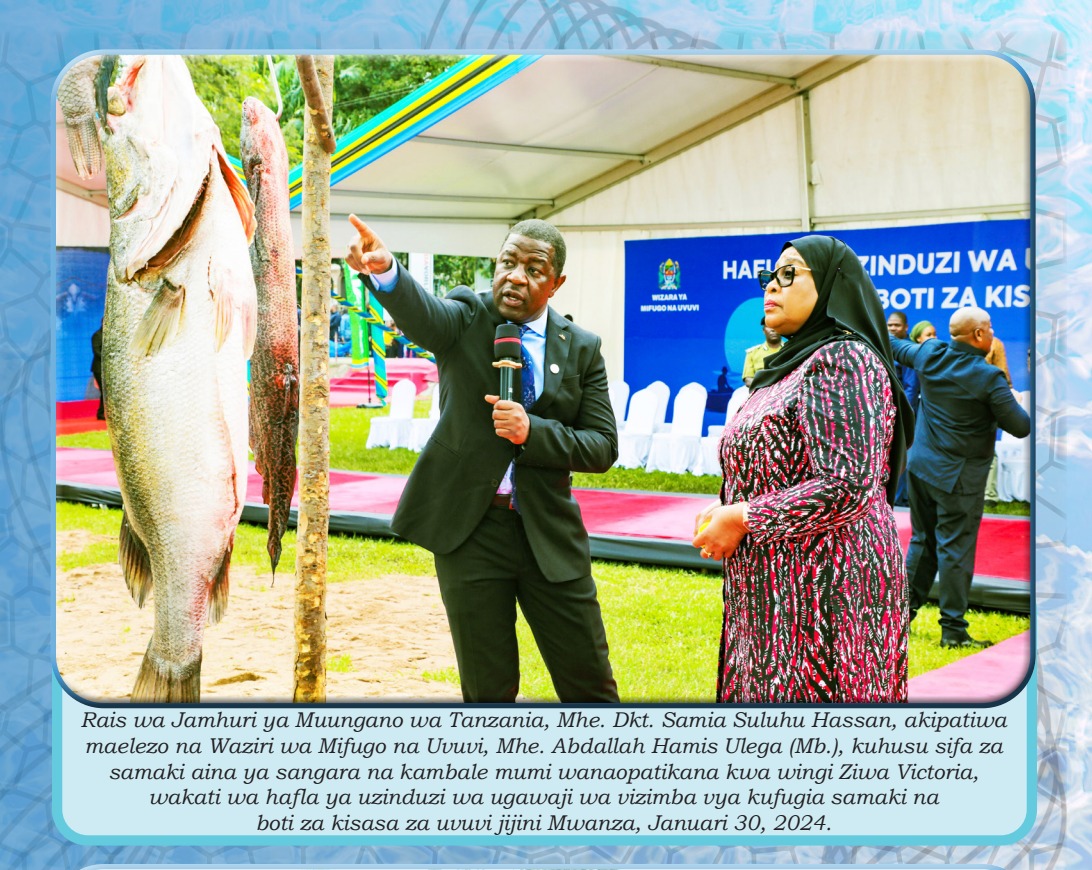Rungwe District: Tanzania’s Untapped Agro-Tourism Paradise – A Message from SAGCOT Centre Ltd.’s CEO, Geoffrey Kirenga
Kilimokwanza.org team
Tanzania’s Rungwe District, in the Mbeya Region, has immense, yet largely untapped, potential for agro-tourism, according to Mr Geoffrey Kirenga, the Chief Executive Officer of SAGCOT Centre Ltd. He shares his insights on why this area is a must-visit destination.
“Tanzania’s Rungwe District in the Mbeya Region is a hidden gem,” notes Mr. Kirenga. He spotlights the Rungwe District as an undiscovered treasure, offering unique experiences not found in more mainstream tourist locations. Its pristine natural beauty and rich cultural heritage remain largely unexplored by the masses. It is a place where visitors can enjoy an authentic, off-the-beaten-path experience, immersing themselves in a part of Tanzania that retains its untouched charm and natural splendour.
“It is a stunning destination for agro-tourism, offering opportunities you shouldn’t let pass you by,” he says. This means the Rungwe District stands out as an ideal location for agro-tourism, blending agriculture with tourism. This creates a unique opportunity to understand and participate in local farming practices. In the district, tourists have the rare chance to engage directly with local agriculture, gaining insights into sustainable farming and how it shapes the lives of local communities.
“Only in Tanzania can you holiday while researching wealth creation!” he adds, emphasizing the unique blend of leisure and learning. Visitors can relax in the stunning Tanzanian landscape while gaining knowledge about agricultural practices that contribute to wealth creation. This combination of vacation and education offers a unique, enriching experience that allows tourists to explore new ways of thinking about agriculture and economics.
“It’s simply unforgettable!” he exclaims, aligning with the mantra of Tanzania’s tourism board, ‘Unforgettable Tanzania.’ This means that experiences in the Rungwe District are not just enjoyable but also memorable, leaving a lasting impression on visitors. The promise of an unforgettable experience ensures that a trip to Rungwe is more than just a holiday; it’s an enduring memory that enriches one’s understanding of the world.
“Agrotourism is growing!” he states, indicating that agro-tourism in Tanzania is a burgeoning field, gaining popularity as travelers seek more sustainable and educational forms of tourism. By choosing Rungwe District, visitors are at the forefront of a growing trend, experiencing a unique blend of tourism that is both responsible and enlightening.
As Mr. Kirenga emphasizes, Rungwe District’s untapped potential makes it a prime destination for those seeking a blend of adventure, education, and sustainable tourism. The region promises not only a journey through stunning landscapes but also an exploration into the heart of Tanzanian agriculture and culture.
Rungwe District: Agriculture and Livestock Farming
Diverse Agricultural Practices
In Rungwe, agriculture is not just a means of livelihood; it’s a way of life. The region is renowned for its production of cash crops like coffee, tea, pyrethrum, cardamom, and cocoa. These crops not only contribute significantly to the local economy but also position Rungwe as a key player in the national and international agricultural markets.
Subsistence farming, focusing on crops such as maize, beans, bananas, and groundnuts, forms the backbone of food security in the district. These crops are essential for the dietary needs of the local population, ensuring that the community remains self-sufficient and resilient.
Livestock Farming: A Cornerstone of Rungwe’s Agriculture
The residents of Rungwe District also engage in extensive livestock farming. Cattle, goats, sheep, pigs, chickens, and ducks are commonly reared in the region. Modern cattle breeds are predominant, thriving due to the favourable climatic conditions — cool weather, ample rainfall, and a long rainy season.
The interdependence between banana cultivation and cattle farming is particularly noteworthy. The cattle contribute to banana production by providing manure, a critical input for cultivating this staple crop. This symbiotic relationship highlights the ingenuity and resourcefulness of Rungwe’s farmers.
A Model of Sustainable Agriculture
Rungwe District’s agricultural practices serve as a model for sustainable farming in Tanzania. The combination of cash and subsistence crops, coupled with effective livestock farming, creates a balanced and sustainable agricultural ecosystem. This approach not only supports the local economy but also ensures food security and environmental sustainability.
For visitors to Rungwe, the agricultural landscape offers a unique insight into the region’s culture and way of life. The district’s commitment to sustainable and diversified farming practices makes it an exemplary region in Tanzania’s agricultural sector.
Stunning Scenery and Diverse Topography
At the heart of Rungwe District lies its captivating landscapes. The Kipengeregere Mountains, along the district’s eastern border, offer not only panoramic views but also a haven for numerous quaint villages, farms, and welcoming tourist lodges. The mountains are a testament to Tanzania’s diverse topography, inviting visitors to explore their serene and unspoiled beauty.
Flowing through the district, the Lwezera River is more than just a body of water; it’s a lively hub for fishing, swimming, and boating. Families and groups often find solace in its peaceful currents, making it a perfect spot for a day out in nature.
The Ngozi Crater, a large crater lake in the southern part of the district, is a sight to behold. Renowned for its camping and hiking trails, the crater offers an unparalleled outdoor experience, allowing visitors to immerse themselves in Tanzania’s natural splendor.
Rich Wildlife and Protected Areas
Rungwe District is not just about stunning landscapes; it’s a sanctuary for wildlife. The Kitulo National Park, located in the southern part, is a biodiversity hotspot, housing exotic species like the giant lobelia, the red-throated sunbird, and the elusive klipspringer. This national park is a must-visit for any wildlife enthusiast.
The central part of the district is adorned by the Mbogo Forest Reserve, a dense forest that is home to majestic elephants, buffalos, and lions. The forest reserve is a testament to Tanzania’s commitment to preserving its natural heritage.
In the Ngozi Crater Wildlife Reserve, also situated in the southern part of the district, visitors can witness the grace of zebras, the migration of wildebeests, and the elegance of topis in their natural habitat. This reserve offers a unique opportunity to observe wildlife up close.
A Destination for All
Rungwe District promises an experience like no other. From the serene mountains to the vibrant rivers, from the lush national parks to the diverse wildlife reserves, it caters to a wide range of interests. Whether seeking a tranquil retreat or an adventure-packed holiday, Rungwe District stands out as a gem in Tanzania’s tourism crown.
For those who yearn to explore the untouched and unspoiled parts of Tanzania, Rungwe District is a perfect choice. With its array of attractions and natural wonders, it promises to offer something for everyone, making every visit a memorable and enriching experience.
12 Must-See Spots
Rungwe Mountain Reserve (Hifadhi ya Mlima Rungwe): A scenic destination offering mountainous landscapes, ideal for hiking and nature exploration.
Lake Ngozi (Ziwa Ngozi): A serene lake popular for its picturesque setting, perfect for fishing, boating, and relaxation.
God’s Bridge (Daraja la Mungu): A natural bridge offering unique geological formations and a picturesque view, suitable for adventure tourism.
Kapologwe Waterfalls (Maporomoko ya Maji Kapologwe): Majestic waterfalls that provide a breathtaking natural spectacle and opportunities for photography and nature walks.
Lake Kisiba (Ziwa Kisiba): A tranquil lake known for its serene environment, attracting visitors for fishing, bird watching, and peaceful retreats.
Malasusa Waterfalls, Kapiki (Maporomoko ya maji Malasusa, Kapiki): Stunning waterfalls offering a beautiful natural backdrop for hiking and exploring the surrounding flora and fauna.
Hot Springs Ilwalilo (Maji Moto Ilwalilo): Natural hot springs known for their therapeutic properties, attracting visitors seeking relaxation and wellness experiences.
Isabula Waterfalls, Ngomano (Maporomoko ya Isabula, Ngomano): Impressive waterfalls in a lush natural setting, ideal for outdoor enthusiasts and nature lovers.
Katembo Tree (Mti Katembo): A significant tree known for its cultural importance, attracting visitors interested in local traditions and natural history.
Ritual Forests (Kasisi and Kabale) (Misitu ya matambiko): Sacred forests rich in biodiversity and cultural significance, offering a unique blend of natural and cultural tourism.
Ancient Buildings (German Camps) (Majengo ya kale): Historic sites with remnants of German colonial architecture, appealing to history buffs and cultural tourists.
Isongoe Fishing Camp (Kambi ya Uvuvi Isongoe): A fishing camp providing an authentic local fishing experience, ideal for those seeking a rustic and immersive outdoor adventure.



One day I wish to come and gain knowledge in your area